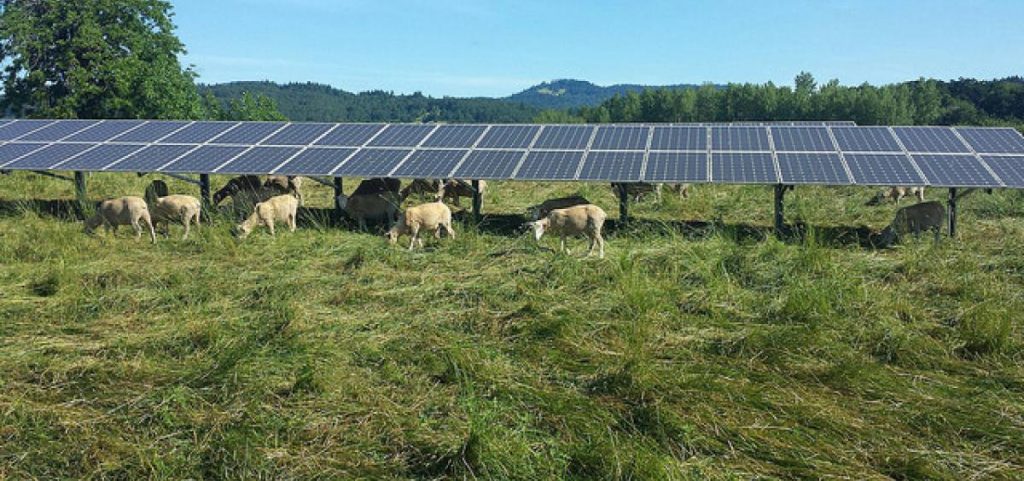A recent study by Oregon State University has found that solar panels located on agricultural fields are the most productive. This idea of co-developing the same area of land is called agrivoltaics and this study has determined that if less than 1% of agricultural land was co-developed with solar panels, the resulting energy would be enough to fulfill the global electric energy demand.

Photo by Brandon Trelstad, Oregon State University Sustainability Office
Chad Higgins, an associate professor in the College of Agriculture, believes that farmers 8,000 years ago had already found the best place to harvest the sun’s energy, “Our results indicate that there’s a huge potential for solar and agriculture to work together to provide reliable energy.”
Currently, the favored location for solar arrays is out in the desert so what does this mean for future installations?
Solar panels in general are known for being pretty finicky and their overall efficiency actually drops the hotter they get. According to Higgins, desert solar panels “have less productivity per acre” than those in slightly cooler locations which supports this shift towards agricultural lands.
In this study, OSU researchers analyzed data collected from five large grid-tied, ground-mounted solar arrays that Tesla has installed on Oregon State-owned agricultural lands. Some power production data was collected as often as every 15 minutes at the 35th Street Solar Array which is located on the west side of the Corvallis campus.

Photo by Mark Floyd, Oregon State University.
Data from Tesla was matched up with data collected by microclimate research stations located at the various arrays to find any patterns linking to air temperature, humidity, wind speed, etc. Using this data, Elnaz Hassanpour Adeh, a recent OSU Ph.D graduate, created a model that graphed the solar array efficiency as a function of air temperature, wind speed, and relative humidity. His results found that efficiency improves with cooler temperatures, a slight breeze, and less humid conditions.
“Solar panels are just like people and the weather, they are happier when it’s cool and breezy and dry”
Chad Higgins, OSU College of Agricultural Sciences Associate Professor
Pairing these conditions with the 17 classes of globally accepted land cover found that the worst location would be in snow/ice and the best would be on agricultural lands.

Photo by Elnaz Hassanpour, Oregon State University.
A previous study published by Higgins and Adeh had already found that solar panels increase the production of non irrigated farmland and the most recent study upholds those findings and affirms that solar panels on agricultural lands increases the productivity of the farmland and the solar array. Another win-win for the books!
To learn more, check out the OSU Newsroom’s article and the original study!
CATEGORIES: Campus Sustainability Community Sustainability Energy Research sustainable development
